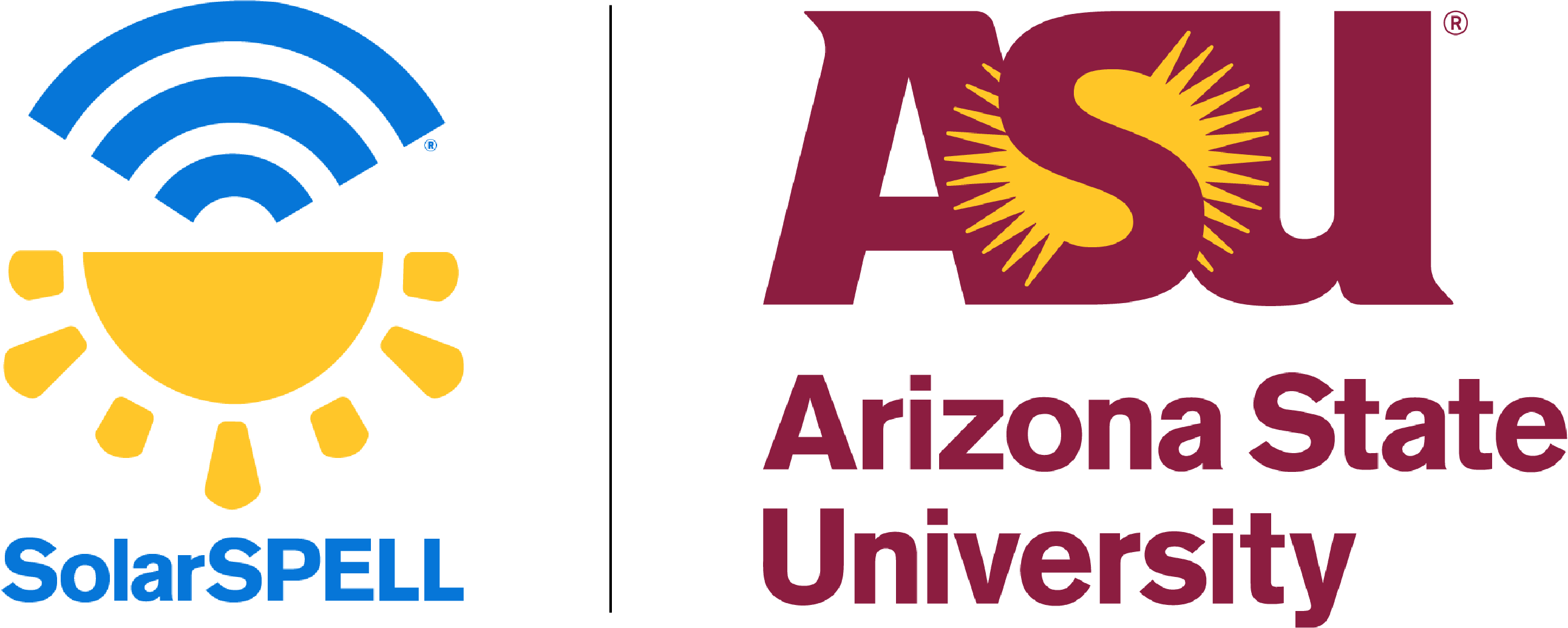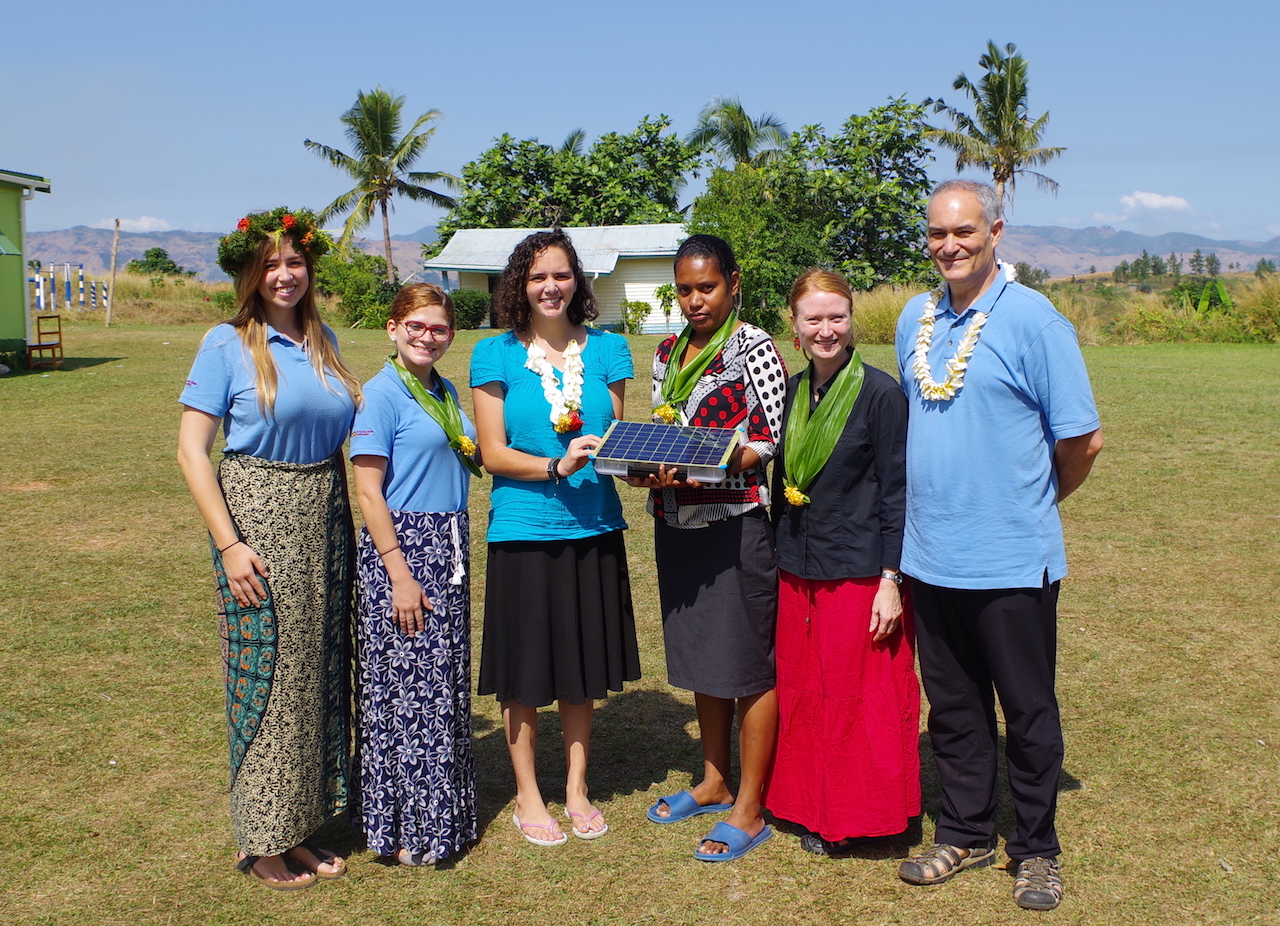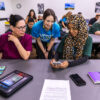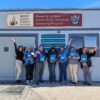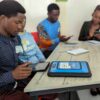Courtney, a Peace Corps Youth in Development Volunteer in Fiji, shares her experience of attending a SolarSPELL teacher training and the impact she anticipates the SolarSPELL digital library having on her school, one of the four pilot schools:
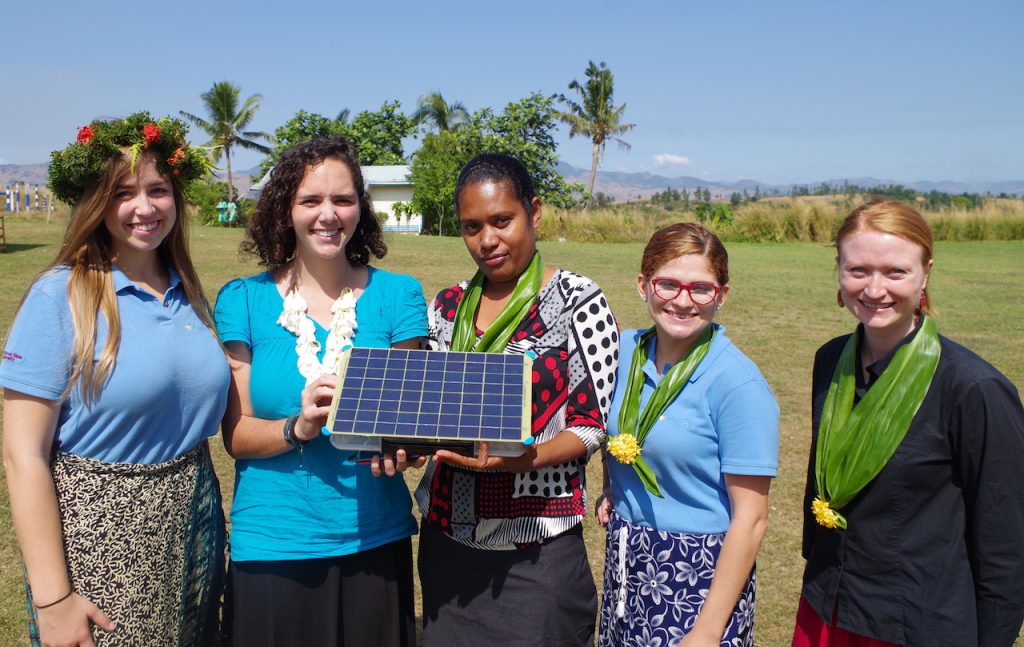 This week I had the opportunity to travel from my island to the other side of the country to attend a training on the use of SolarSPELL (Solar Powered Educational Learning Library), which is currently designed and implemented by a team at Arizona State University. The team frequently works with Peace Corps Volunteers and other local-based development organizations in various countries in the Pacific and East Africa in order to equip deserving schools with this technology while also maintaining contact to receive feedback as they make continual improvements to the SolarSPELL experience. Here, I’ll run through what exactly this thing-a-ma-jig is, then lay out why it is such a HUGE DEAL for my school.
This week I had the opportunity to travel from my island to the other side of the country to attend a training on the use of SolarSPELL (Solar Powered Educational Learning Library), which is currently designed and implemented by a team at Arizona State University. The team frequently works with Peace Corps Volunteers and other local-based development organizations in various countries in the Pacific and East Africa in order to equip deserving schools with this technology while also maintaining contact to receive feedback as they make continual improvements to the SolarSPELL experience. Here, I’ll run through what exactly this thing-a-ma-jig is, then lay out why it is such a HUGE DEAL for my school.
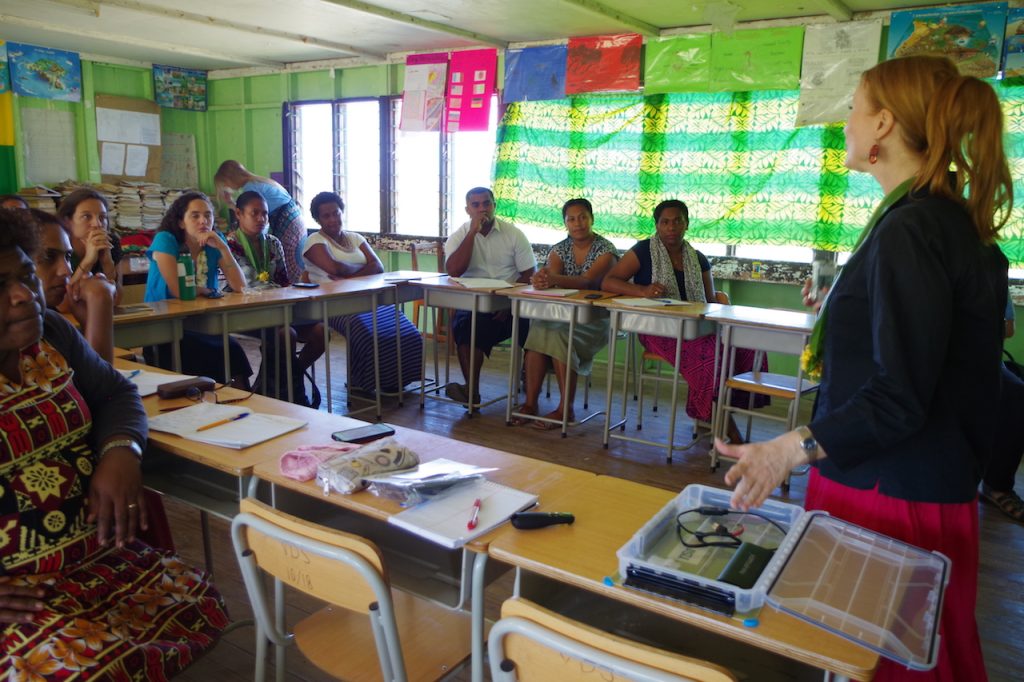 The device functions essentially as a server, allowing users to connect their phones, laptops, or tablets to the WiFi connection that the device itself provides in order to access a digital library (this differs from a computer in that users do not generate any of their own content; i.e., we can view files but can’t make our own documents to put onto the device). This may seem like no big deal, especially to anyone reading from home who has been to university and accesses databases and other goldmines of information on the daily. The kicker with this device is that it fits into a waterproof, dust-proof box, and is solar-powered. So if you live in a rural, humid, rainy village with no electricity and go to school where there is no technology in use by students whatsoever, and where the physical library is slowly being built back up post-devastating cyclone, and where teachers have very few resources besides a chalkboard and some poster paper to teach their children, this truly seems like a blessing from above.
The device functions essentially as a server, allowing users to connect their phones, laptops, or tablets to the WiFi connection that the device itself provides in order to access a digital library (this differs from a computer in that users do not generate any of their own content; i.e., we can view files but can’t make our own documents to put onto the device). This may seem like no big deal, especially to anyone reading from home who has been to university and accesses databases and other goldmines of information on the daily. The kicker with this device is that it fits into a waterproof, dust-proof box, and is solar-powered. So if you live in a rural, humid, rainy village with no electricity and go to school where there is no technology in use by students whatsoever, and where the physical library is slowly being built back up post-devastating cyclone, and where teachers have very few resources besides a chalkboard and some poster paper to teach their children, this truly seems like a blessing from above.
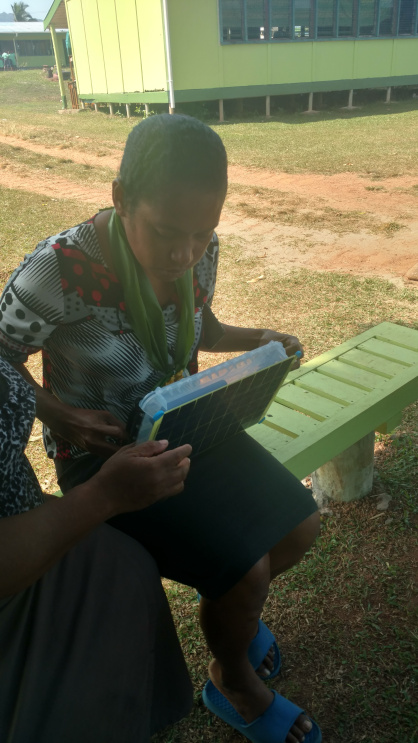
Ms. Mela, the first grade teacher, turning on SolarSPELL for the first time
On top of all of that, the SolarSPELL team curates each library to ensure that relevant material is provided to whatever region that particular version of the library is distributed. For example, learning about cyclones is much more relevant for my school than learning about blizzards; learning about diabetes or dengue is much more relevant for my school than learning about Lyme disease; and learning an alphabet with familiar words like ‘i for island’ rather than ‘i for ice’ [no electricity, no ice] makes all the difference in the kids’ education. This helps partially via accurate representation, which means the kids relate to and invest in the content more, but also helps me find relevant content to teach and not get mired up in explaining (in Fijian!) what ‘ice’ is to a kindergarten student who is still learning the alphabet.
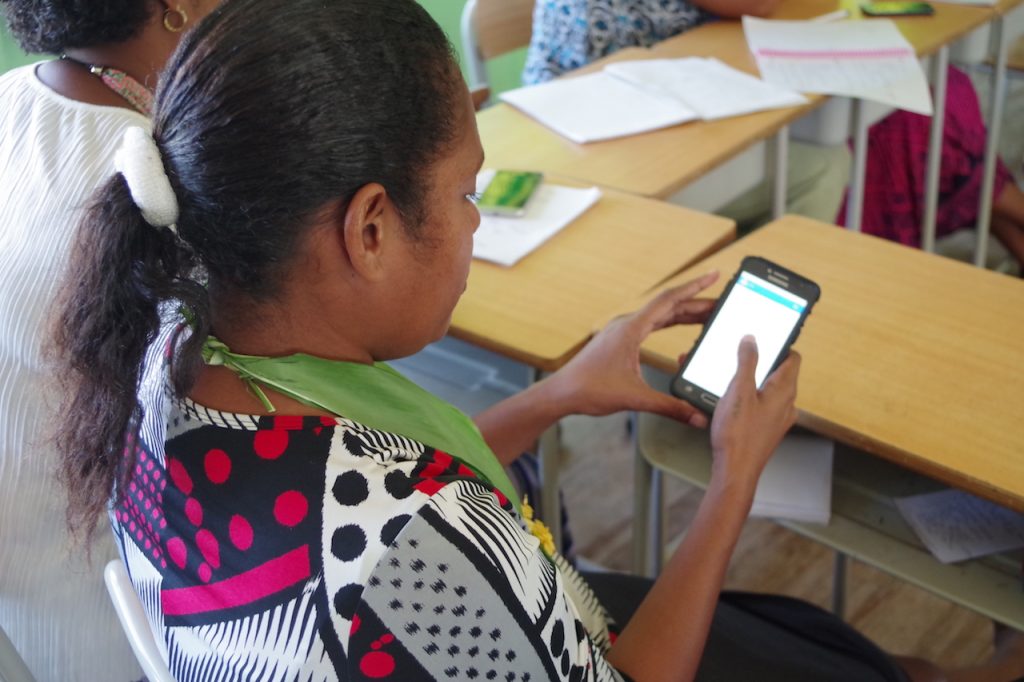
Ms. Mela exploring the digital library for the first time
My school is one of four pilot schools in Fiji for SolarSPELL, so as the teachers and I use it, we’ll also provide feedback to the team at ASU about suggested content to add to future versions. The first grade teacher came with me to the training, where we learned about the SolarSPELL as well as an additional library lab. The library lab consists of several tablets, solar-powered batteries, and a small, portable solar panel. We were incredibly excited when the team offered it to us to test, as we have no computer lab at school, so it will help us maximize the potential use of the SolarSPELL.

Ms. Mela connecting the Library Lab to its solar charger
We can’t wait to train our fellow teachers on it when we return. The teachers are always looking for new ways to improve how they can teach the students, and we’re already overflowing with potential uses for this. It generates its own WiFi, which means anyone can connect at no cost to them. In Fiji, people ‘top-up’ their phones in order to buy data to use — meaning that every moment online and every site surfed uses up bytes, and, money. Some plans offer free use of apps, such as Facebook, so those become the most popular — and many people don’t learn how to use the Internet in other more productive ways. Having the solar-powered digital library at our disposal will assist the kids’ education while also help them become more technologically literate and understand how they can take control of their own education in the future via Internet research. People in my village love watching videos, so I’m hoping that the school can conduct a parent-outreach night where we simply encourage parents to bring a smartphone, surf through the content, and download anything of interest for their kids to use at home too.
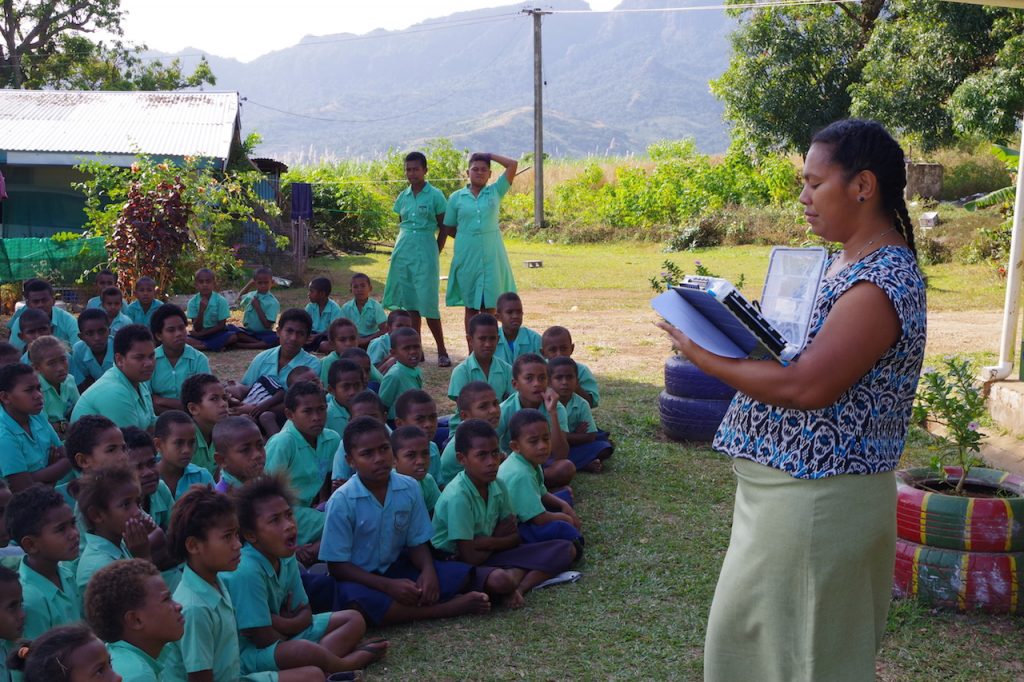
In the months I’ve been at site, I’ve gone through cycles of high hopes and crashing realities. With the SolarSPELL, I’m pretty confident the reality will measure up to the hopes we have right now. I want to express my immense gratitude to the SolarSPELL team for providing this unimaginable opportunity, to the teachers at my school for being so passionate and game to improve however they can, and to the head teacher (primary school principal) for always being open to what I can offer as a volunteer. So many people, in Fiji and in the United States, ask what my job is as a volunteer. I think this experience sums it up — I simply serve as a bridge between a community and potential resources or programs. I couldn’t by myself provide such a technology to the school, yet even if I could, it only proves worthwhile given the investment and utilization by the community itself. I’m so excited to see where this road leads.
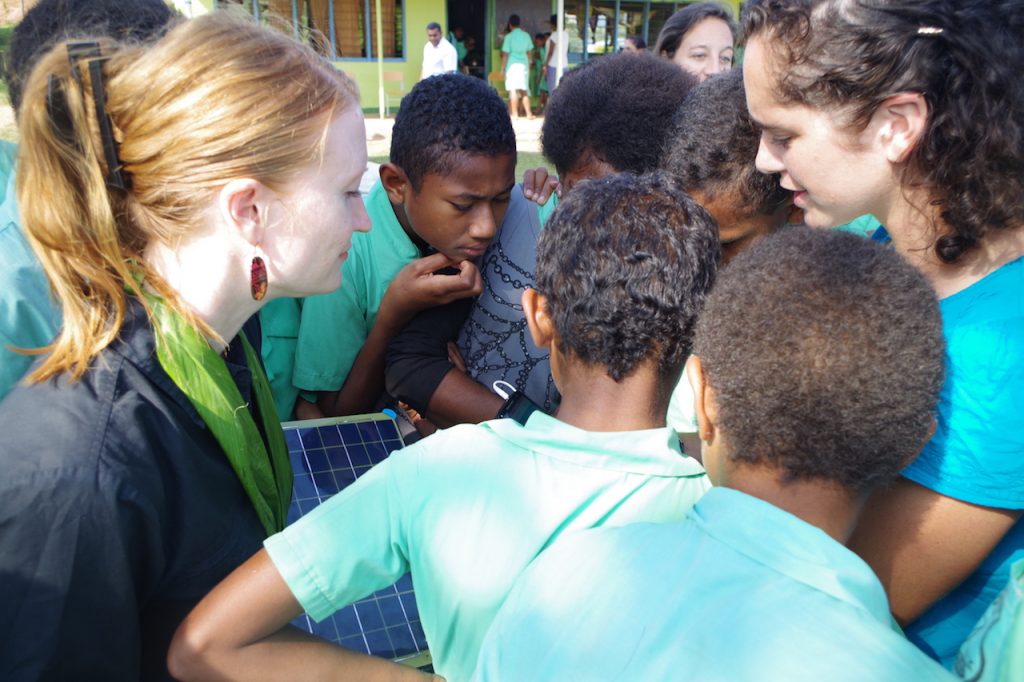
Courtney and Dr. Hosman showing SolarSPELL resources to students
This post originally appeared on Courtney’s own blog site: https://finkyinfiji.wordpress.com/
